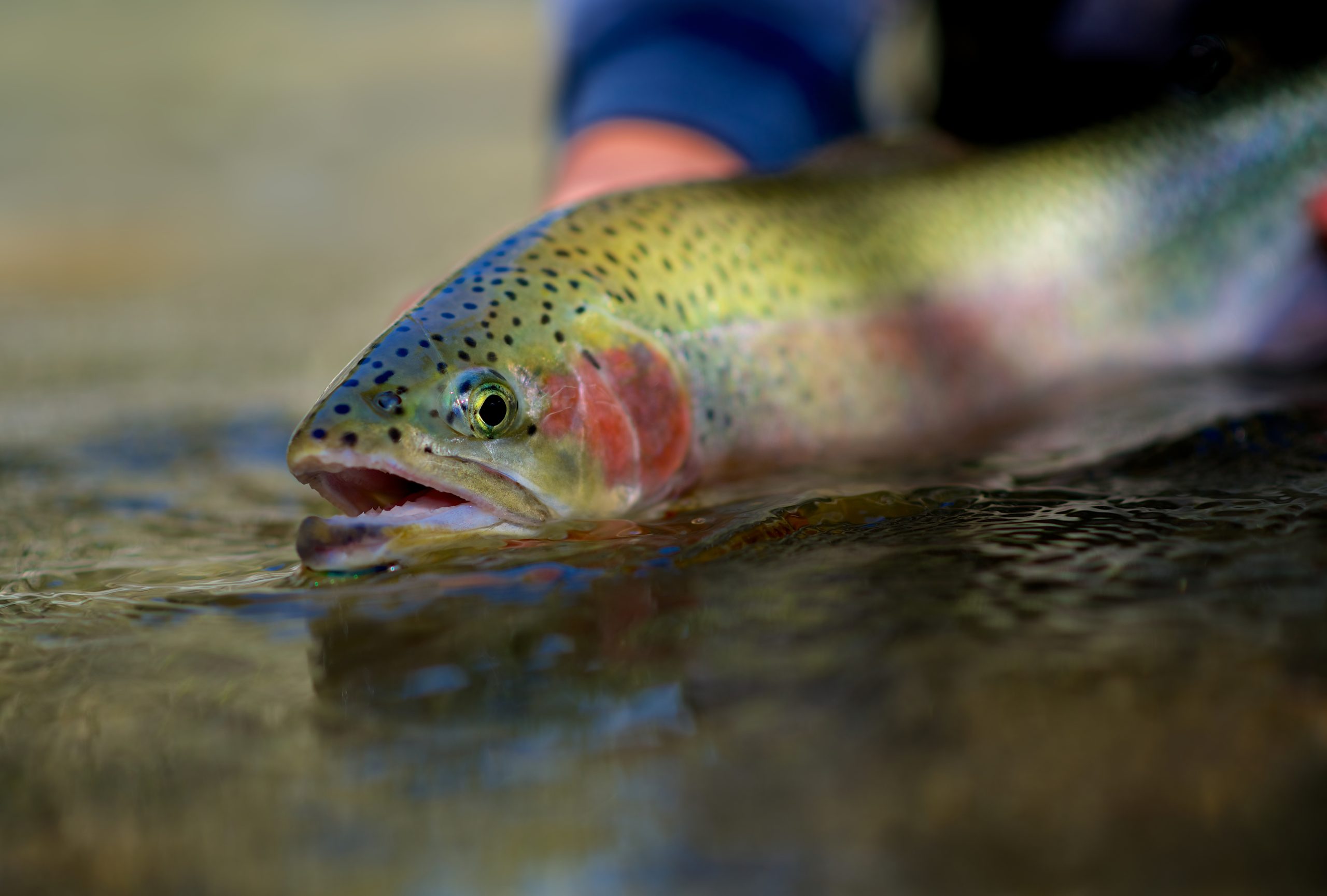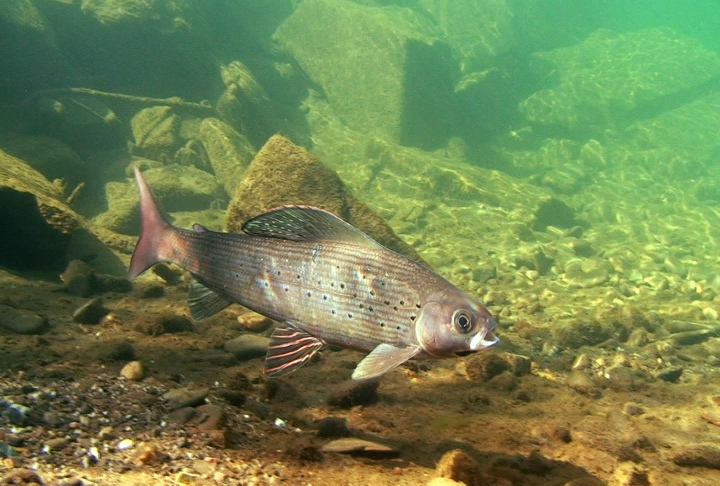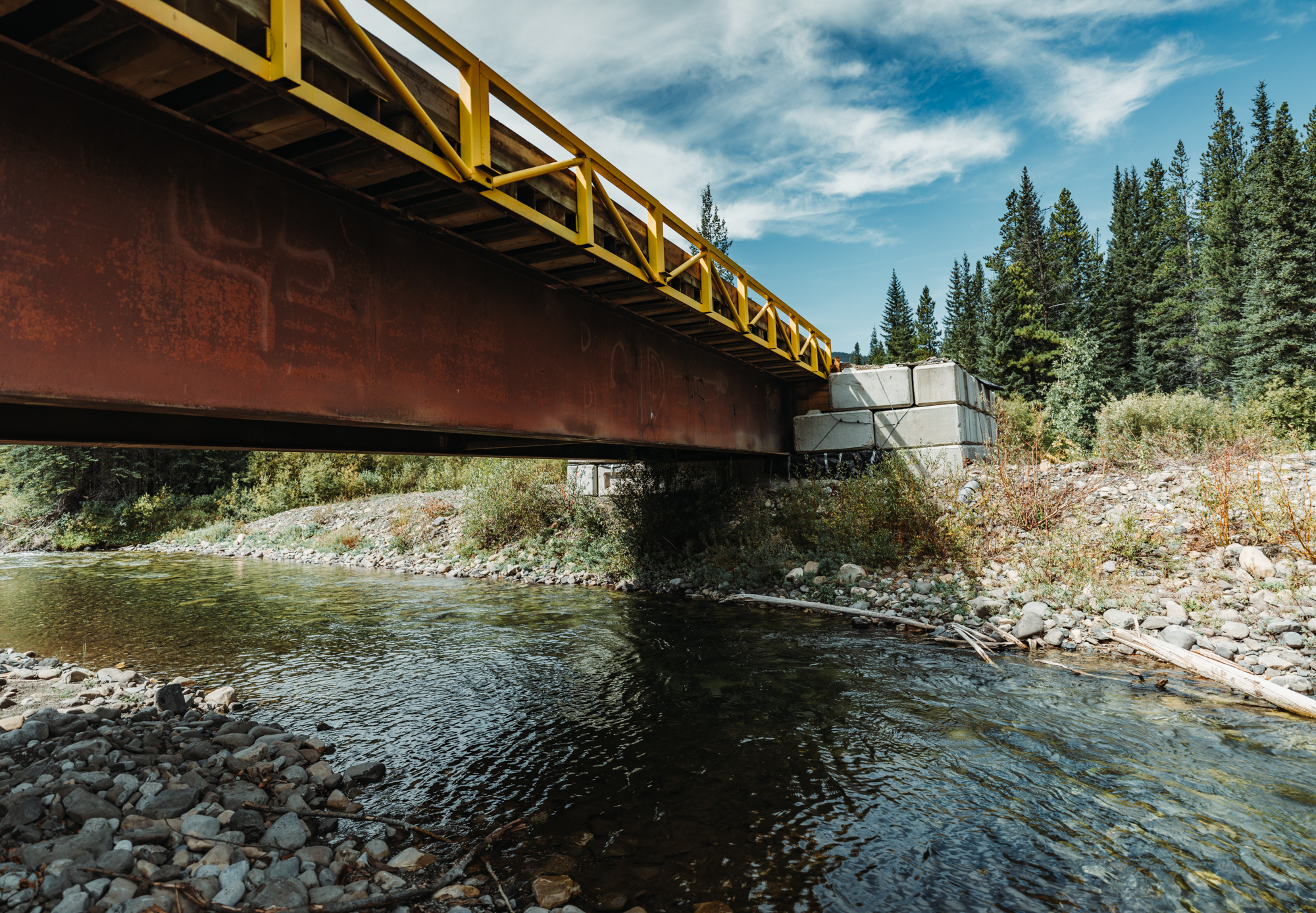
How Aquatic Species — and Their Fates — Can Help Explain the Failings of the Species At Risk Act
May 8, 2024
- •
- •
- •
What makes protecting endangered aquatic species more slippery than a freshly caught fish wriggling in your bare hands?

There are 19 aquatic species listed under the federal Species at Risk Act (SARA). Photo © A. Toner
By Nathaniel Schmidt
Read the pdf version here.
Editorial note: This is the second of four articles explaining species at risk protection, why it is not working and what must be done to prevent the loss of more species. This article delves into how the Species at Risk Act is affected by varying levels of government.
What makes protecting endangered aquatic species more slippery than a freshly caught fish wriggling in your bare hands?
In short, the complicated relationship between legislation and politics. And of course, government inaction.
Like all at-risk species — whether on land, in water, or in the air — the legal and political relationship between governments leads to chronic issues in effectively protecting species.
Aquatic species that make a home of Alberta represent a fraction of the total number of species at risk in Canada — 19 out of 197 to be specific — but they are a focal point for the failed application of the federal Species at Risk Act (SARA) and chronic government failure in upholding their legal obligations.
The way SARA is applied is a result of the distribution of legislative powers set out in the Constitution in 1867, which is notoriously difficult to amend. Species at risk are a particularly difficult subject because the “environment” was never part of the Constitution and therefore does not fall under the sole control of one level of government.
This limits SARA’s application across Canada. However, aquatic species happen to be one of three areas under direct federal jurisdiction, making them a tragically useful subject for exploring the application of SARA in the real world.
Water borders
“Aquatic species” has a broad definition under SARA that includes “a wildlife species that is a fish,” further defined in the Fisheries Act as all freshwater fish, crustacean, and shellfish species. Control extends to “habitat,” which includes all areas “on which aquatic species depend directly or indirectly in order to carry out their life processes.”
To better understand why SARA inadequately protects aquatic species, we must delve into how different levels of government control water. In addition to SARA, the federal government controls “fisheries” and “navigable waterways” through other legislation like the Fisheries Act and the Canadian Navigable Waters Act. At the same time, every province has control over the use of water and its surrounding ecosystems. Each province exercises its control slightly differently based on the laws they enact, which further complicates the application of SARA across Canada.
Alberta has a complex history of jurisdiction around water and now exercises broad control over its use and regulation through This may seem counterintuitive based on the equally broad control of the federal government over what lives in and around water. For species at risk, it may be easiest to think of the relationship as constantly overlapping.
Canadian courts have historically encouraged governments to cooperate in these situations. But in reality, this ideal is often quickly forgotten once tough decisions arise. In his excellent analysis on this subject, A Fish out of Water: Inland Fisheries, Water Management and the Constitution, Jason Unger of the Environment Law Centre in Edmonton points out that even with relatively clear areas of control under the Constitution, the relationship between Alberta and Canada when it comes to water is intimately connected. The application of these conflicting legal currents to protect at-risk aquatic species is at best inefficient, and at worst, totally ineffective. And it means that delay in providing adequate protections and adequate information is the norm rather than the exception.

The Arctic grayling is designated as a Species of Special Concern in Alberta as a result of its vulnerability to angling pressure and habitat destruction. Photo © R. Blanchard
Whose Fish is it Anyway?
The 19 aquatic species listed in Alberta are classified under SARA as either “threatened” or “endangered,” the two most serious designations that trigger stringent protections, legally obliging governments to take concrete conservation actions with clear deadlines. Familiar to many may be the westslope cutthroat trout, bull trout, and Athabasca rainbow trout. All three are nearing extirpation or extinction in Alberta and show few positive signs of recovery. All three provide some useful context because their historical habitat falls in areas with high population density and potential for resource development.
Jurisdiction has consistently acted as an effective shield for governments to assert control over a preferred action or, consequently, to abdicate responsibility when an action is unpopular, expensive, or difficult. At times, both the provincial and federal governments have simultaneously asserted control and abdicated responsibility for protection of the fish. Delay is further exacerbated by poor implementation even once required plans are completed. This persists despite clear scientific evidence all three species are disappearing at alarming rates.
As far back as 2006, governments knew populations of westslope cutthroat trout had been reduced by 80 percent. This led to a designation of “threatened” by SARA’s scientific body the Committee on the Status of Endangered Wildlife in Canada (COSEWIC) in 2007. Once COSEWIC makes a designation, the responsible Minister and the Governor in Council (cabinet) should follow the intended outcomes of SARA and make a decision about listing a species within nine months. Reality is much different.
Despite this, the westslope cutthroat trout were not listed until 2013 and a federal Recovery Strategy was not published until 2014, blowing past timelines in the SARA by almost a decade. By 2016, the trout’s survived in less than 20 percent of its historical habitat. Ten years on, and things are even worse. Westslope cutthroat trout survive in about five percent of their range with critically low populations — a result of varying interpretations of SARA by successive governments that allowed them to sidestep decisive action.
Bull trout suffer a similar situation. Alberta’s “official fish” were provincially designated as “threatened” in 2014 under Alberta’s notoriously inadequate Wildlife Act, the province’s only tool for protecting at-risk species. Under the Act, it is not clear if a “threatened” designation requires the creation of a recovery plan. In fact, it is not even clear what “threatened” means or how it is applied because it is not properly defined anywhere, a basic principle of legislation every law student learns in their first year of law school.
A provincial recovery plan was eventually published in 2023, seemingly prompted by the overdue federal designation as “threatened” (which thankfully has a clear legal definition) under SARA in 2019. The federal government was notified of the bull trout’s “threatened” assessment in 2013. Incredibly, six years passed before any action was taken, again blowing past legally defined deadlines, a nine-year delay causing already vulnerable populations to decline further alongside the loss of viable habitat.
Tragically, Athabasca rainbow trout have suffered similar delays under the more serious COSEWIC designation of “endangered.” This came in 2014 but the fish was not officially listed until 2019 because of “extended consultations.” A federal recovery strategy was finally published in 2020, which should then be followed by an action plan. Like with species listing, the wording of the SARA allows the federal government to find what are essentially loopholes in avoiding intended outcomes and delaying progress indefinitely. Four years on, and there is no indication how close an action plan is to completion.
Delays of this magnitude have wide-ranging effects because the federal designations of “threatened” and “endangered” prompt the mandatory creation of recovery strategies and action plans, the primary tools used to outline and implement conservation measures. These documents have further mandatory five-year reporting periods that must summarize and update progress until conservation goals are met, or the recovery of the species is no longer feasible. The collective delay from both levels of government seems to indicate they are hoping for the latter.
Secretive Permits
The SARA permitting process is similarly weak. Permits for some activities affecting the critical habitat for an at-risk species can be granted under section 73 of SARA, but a series of pre-conditions must be met. That includes scientific activities related to the implementation of recovery strategies. However, permits issued for development and industrial activity within critical aquatic species habitat is a recent trend in Alberta.
Drew Yewchuk of the Public Interest Law Clinic (“PILC”) in Calgary has undertaken years of process and procedure analysis under SARA. His work on the permitting process has revealed a system that lacks accountability and transparency. The Act states that permits must be posted in the publicly accessible SARA registry to provide the opportunity for public participation and give insight into the government’s decision-making process.
Yet, as Yewchuk points out, those permits are not posted publicly. Instead, the public is only provided vague explanations of why permits were granted, sometimes not even indicating the parties involved. And even these vague explanations are often posted months after a project is completed, nullifying any value they could have had. Without public notice, how can the public provide comments?
Yewchuk further notes that the federal government’s process is not realistically compliant with the purpose of permits under the Act. They are meant to be limited by the criteria set out in legislation and Yewchuk says that keeping them secret until months after a project is completed prevents meaningful public objections and potential litigation. Both are crucial tools to hold the government accountable for following its own laws.
The construction of a bridge across the Highwood River in Kananaskis for clear-cut logging is a recent example of how this perpetuates harm to at-risk species. The Highwood River is one of the few remaining areas in Alberta capable of supporting bull trout. It is designated under SARA as a critical habitat with legally binding protections and limitations for activities that affect bull trout. Despite this, Spray Lake Sawmills was able to build a bridge right on top of an area subject to the most rigorous protections for endangered species under Canadian law.
When pushed for responses, none of the parties involved had answers or took responsibility for what happened. Instead, the public was left in the dark. It was only thanks to the careful eye of environmental consultant Michael Sawyer that the issue was brought to public attention at all.
Most concerning is that this could have all happened under the government’s current approach to permits and the public would have had the same quality and quantity of information. As Yewchuk’s research shows, it is possible, and even probable, that a permit for the construction of this bridge was granted and appeared on the SARA registry months after completion.
Will we ever know how this was allowed to happen? Will a permit be issued retroactively to allow the bridge to remain? Is this even allowed? It is difficult to say and just as difficult to find out. Yewchuk sums it up best in his analysis, stating that “No one can challenge a secret decision.”

The bridge built over critical habitat for bull trout by Spray Lake Sawmills. Photo © A. Toner
What are Our Leaders Doing?
Unfortunately, these problems go beyond aquatic species. As recently reported, caribou in Alberta are facing imminent extirpation despite a conservation agreement signed between Alberta and Canada in 2020 under section 11 of SARA. This agreement was made under threat from the federal government that they would step in to enforce adequate conservation actions to ensure the continued survival and recovery of caribou (check the Wilderness Watch section of the magazine for more).
Will the federal government do the same for these aquatic species if their numbers continue to decline? Its current hands-off approach has so far proven unsuccessful. And, its explicit failure to uphold its own mandatory deadlines does not provide much hope.
Yewchuk’s years of research and analysis have been aimed at keeping our leaders accountable. He says that describing this situation as “complacency” is no longer accurate. Instead, he sees this as systemic, executive branch non-compliance or resistance. Quite simply, the responsible ministers do not fulfill the tasks required of them by SARA or the courts.
Governments at all levels continue to rely on the actions or inactions of other levels of government to justify their own failures to protect species at risk. For Yewchuk, public pressure is needed to start to fix this problem, but it is not enough. He says that specific, effective, and strategic demands must be established before turning on public pressure. He believes this is necessary to prevent governments from redirecting responsibility or delaying until the issue floats away from public attention.
For Alberta’s aquatic species at risk, meaningful steps cannot come soon enough with renewed calls for resource development in critical habitat along the Eastern Slopes and elsewhere. It is crucial we all understand how these laws work and what actions are available to experts and the public to hold governments accountable.
The third article in this series will appear in the Summer 2024 Wild Lands Advocate. It will explore how advocates for species protection fight back against chronic government inaction, the role of the courts in this process, and what members of the public can do to help.